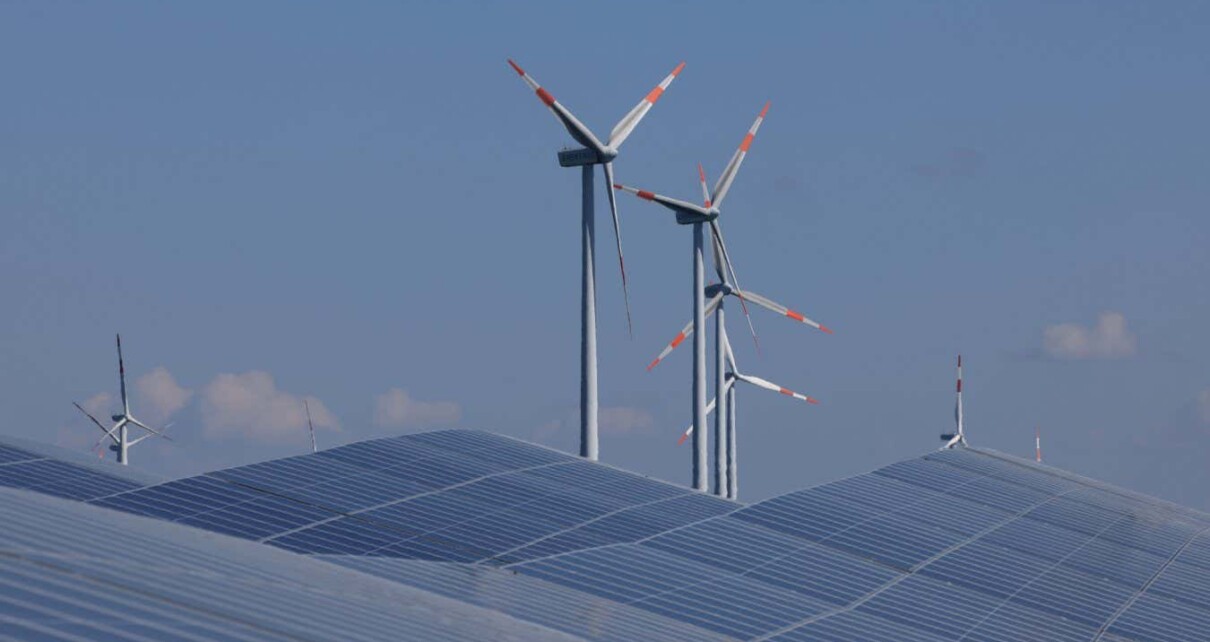[ad_1]

Solar panels and wind turbines at a new solar park near Prenzlau, Germany
Sean Gallup/Getty Images
Emissions from global electricity generation may have peaked in 2022 and are expected to start declining in the coming years, in a sign the power sector could have reached a tipping point in its transition to clean power.
Electricity emissions grew by 1.3 per cent last year to hit a record high, fuelled by a small increase in coal use to meet growing electricity demand after the end of the covid-19 lockdowns.
But 2022 will probably be the last year the global power sector will log such a growth in emissions, according to the energy think tank Ember, which claims the sector has hit an historic turning point in the shift to clean sources of power.
In a new report that draws on 2022 data from 78 countries covering 93 per cent of global electricity demand, Ember says record deployments of renewable power last year pushed wind and solar to reach a record 12 per cent of electricity generation, up from 10 per cent in 2021.
Cheap green power met 80 per cent of the increase in electricity demand as economies opened up after the covid-19 lockdowns, with coal generation increasing by just 1.1 per cent during 2022.
The pace of growth in clean power will accelerate in 2023 and beyond, according to the Ember report, as developers take advantage of falling technology costs and favourable government policies to roll out more cheap green electricity generation.
Strong growth in renewable deployment, coupled with a small fall in fossil fuel generation, will be enough to see power sector emissions plateau or fall next year, it predicts.
“In this decisive decade for the climate, it is the beginning of the end of the fossil age,” lead author Małgorzata Wiatros-Motyka said in a press statement. “We are entering the clean power era.”
Alfonso Martinez-Felipe at the University of Aberdeen, UK, says Ember’s prediction is “feasible”.
But James Glynn at Columbia University, New York, says it will take another year or two for the long-term trend in falling emissions to become clear. “It is possible that 2022 may have been the peak year of global power sector emissions, but we won’t know until 2024 or 2025,” he says.
The global electricity sector needs to be one of the first global sectors to decarbonise in order to keep the world on track for net zero emissions by mid-century, a pathway in line with limiting global warming to 1.5°C.
According to the International Energy Agency (IEA), the power sector must be net zero globally by 2040 to keep pace with this timeline.
However, despite Ember’s predictions that power sector emissions may have already peaked, there are still questions over whether emissions will fall fast enough to meet the IEA’s deadline.
Charlie Donovan at Impax Asset Management says that most people in the energy sector agree that power sector emissions have peaked or will do so imminently because commercial and political forces now favour a global transition to low-carbon power.
“Everybody’s projections are for a peak in emissions from the power sector,” he says. “Long term, the structural drivers are there. The fundamentals are lined up.”
But he warns a recent collapse in fossil fuel prices could drive increased use of coal and gas for electricity generation in the short term. This could mean emissions plateau this decade, rather than start to fall. “I do think we could stay at a plateau for a lot longer than some of the long-term fundamental drivers would suggest,” he says.
Topics:
[ad_2]
Source link




